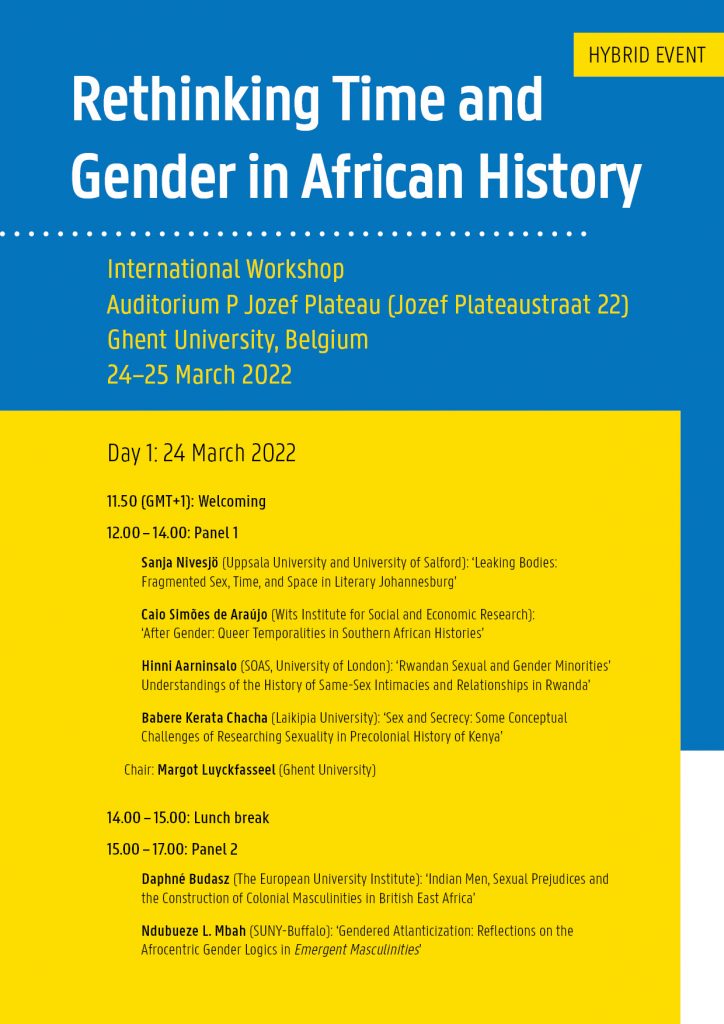
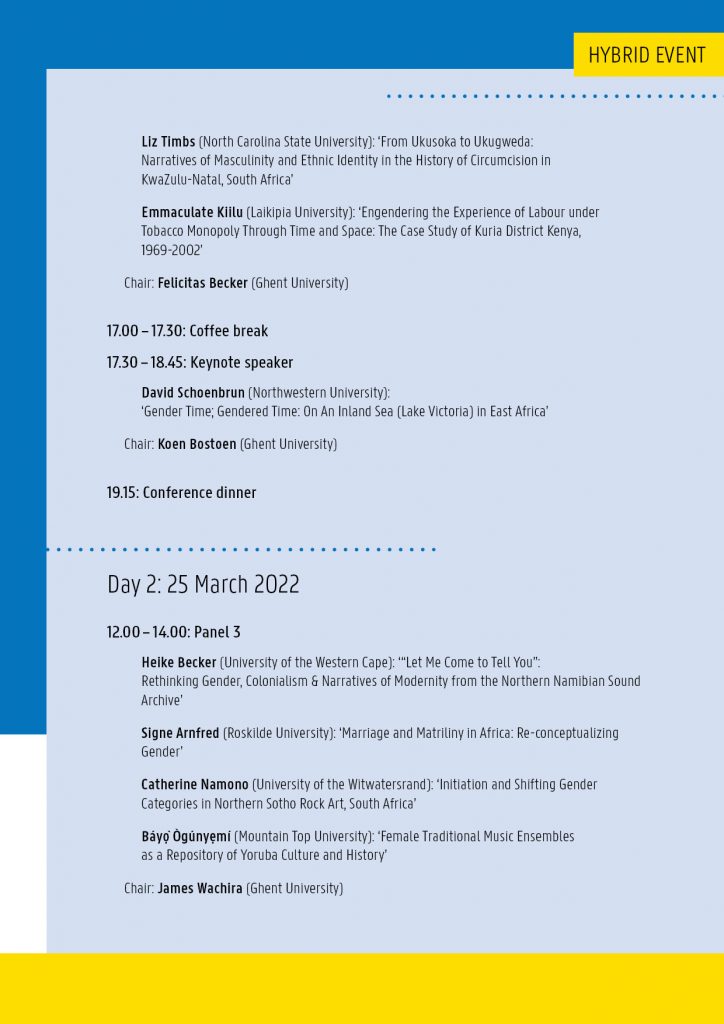
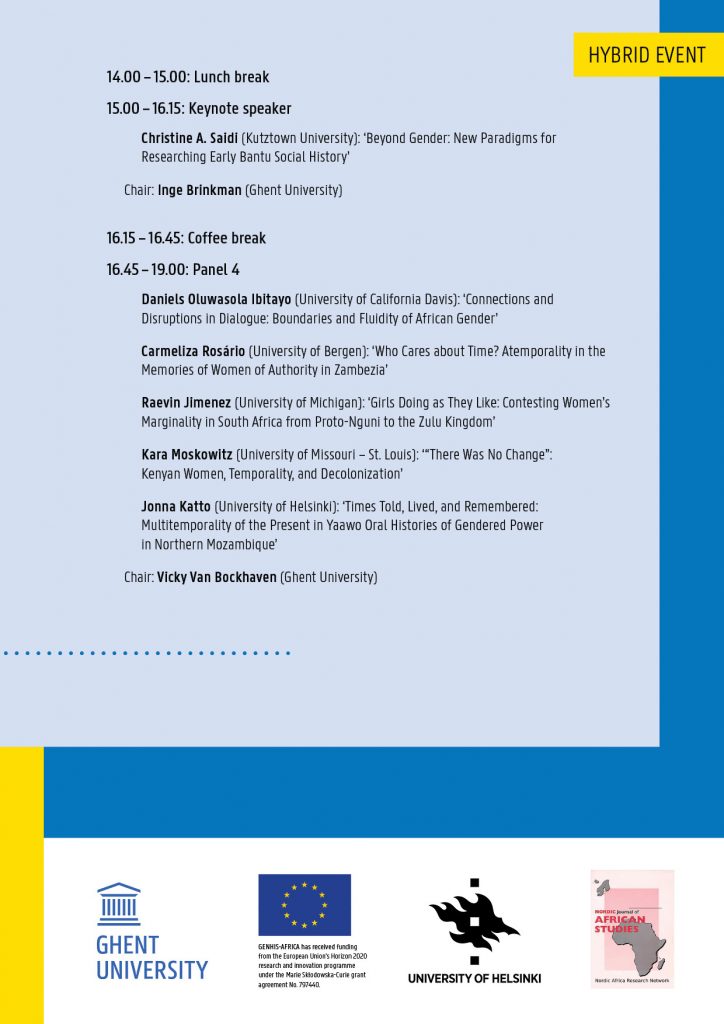
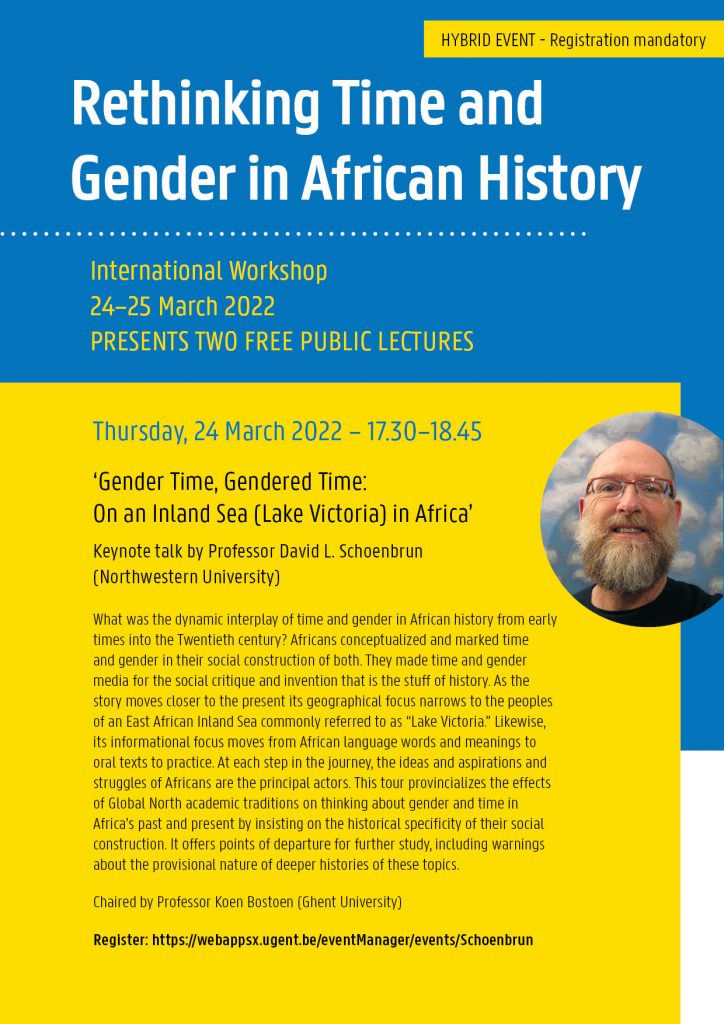
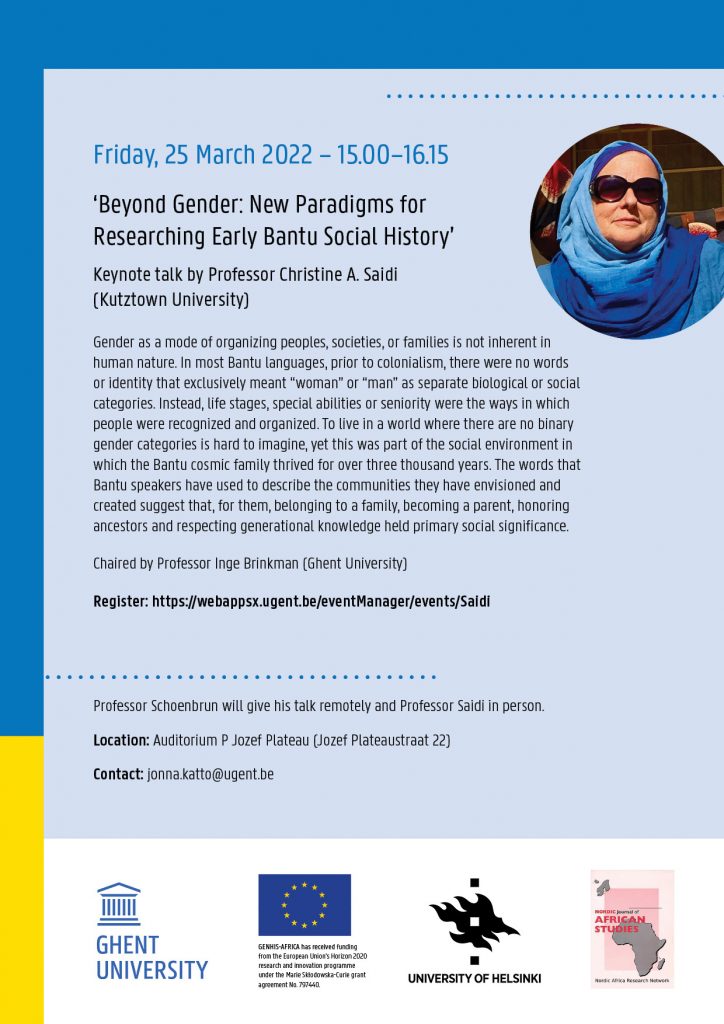





2 Workshops with choreographer Harold George in de Vooruit. Contact Amber.Frateur@UGent.befor information
A dance rehearsal/debate: with Harold George, Dunia Dance Theatre & AfriKeraArts
Registration:https://webappsx.ugent.be/eventManager/events/DANCEREHEARSAL
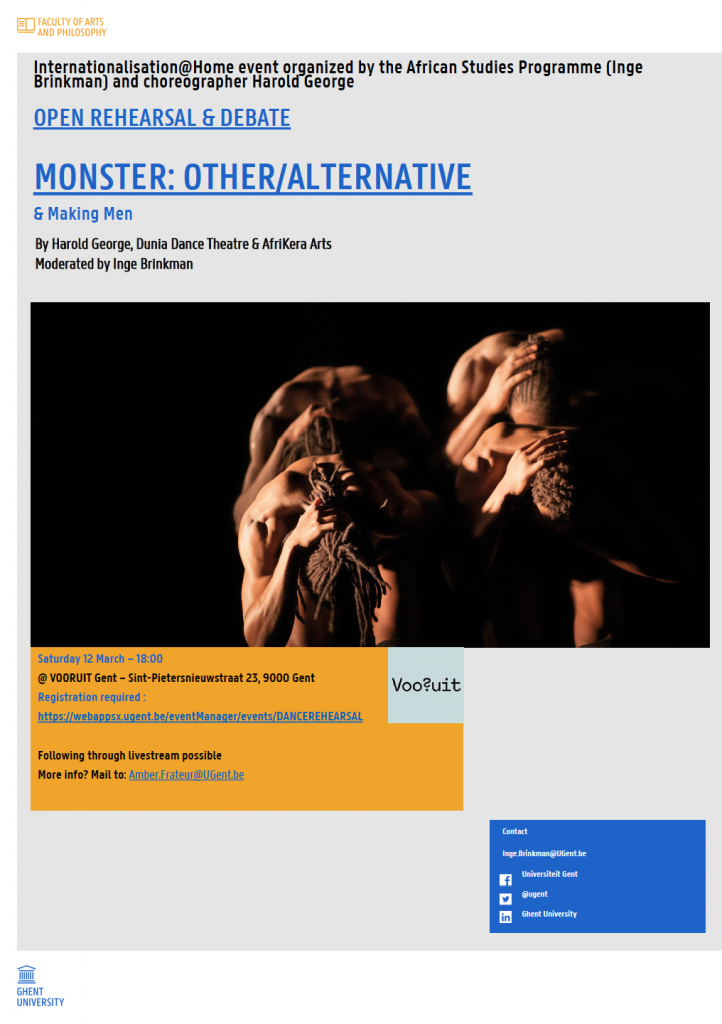
A lecture: “Monster: Other/Alternative” by Inge Brinkman
Registration: https://webappsx.ugent.be/eventManager/events/MonsterOtherAlternative
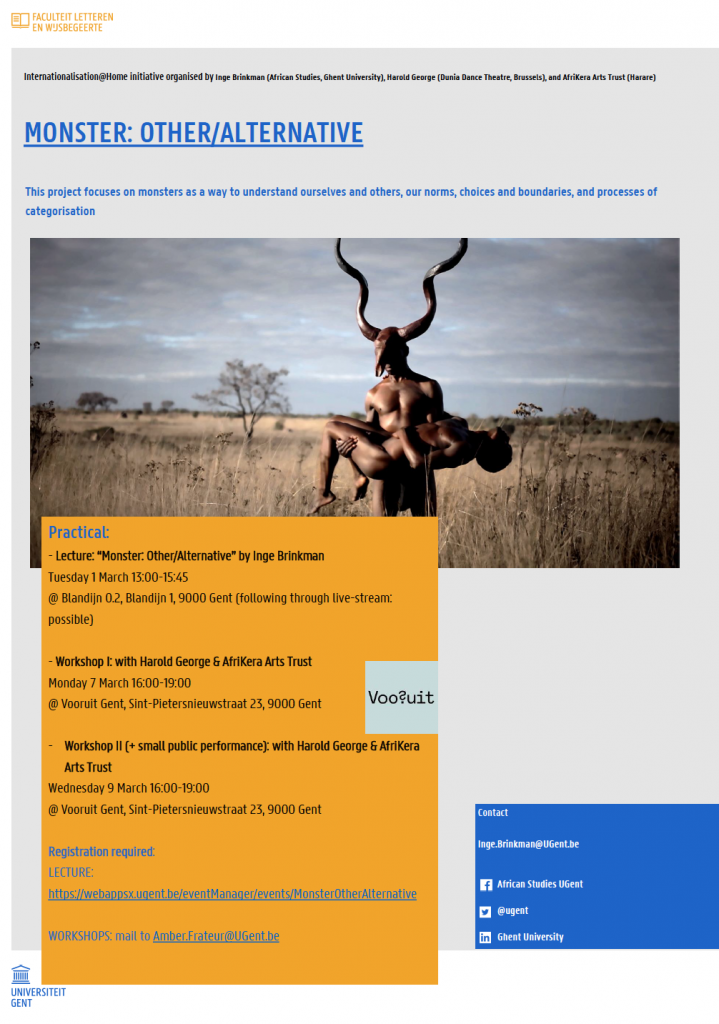
Contact
Lorenzo Maselli (lorenzo.maselli@ugent.be)
Contact
Sifra Van Acker (sifra.vanacker@ugent.be)
Lorenzo Maselli (lorenzo.maselli@ugent.be)
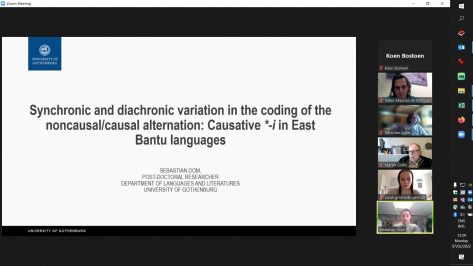
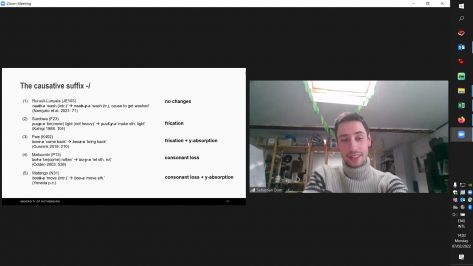
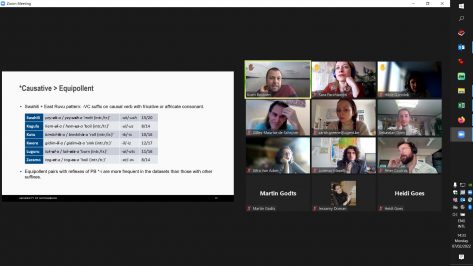
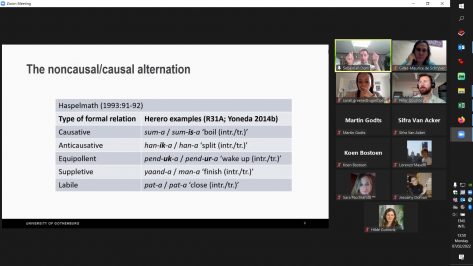
Contact
Sifra Van Acker (sifra.vanacker@ugent.be)
Lorenzo Maselli (lorenzo.maselli@ugent.be)
Contact
Sifra Van Acker (sifra.vanacker@ugent.be)
Lorenzo Maselli (lorenzo.maselli@ugent.be)
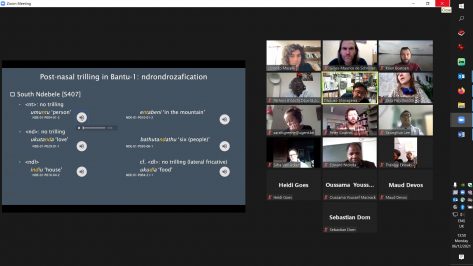
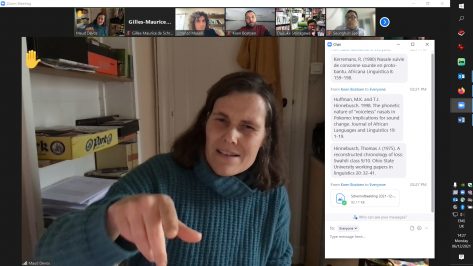
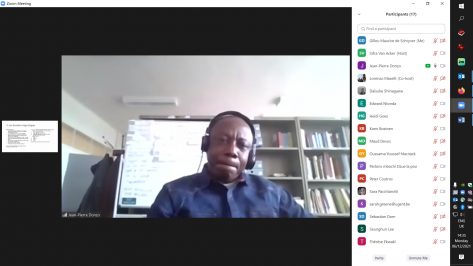
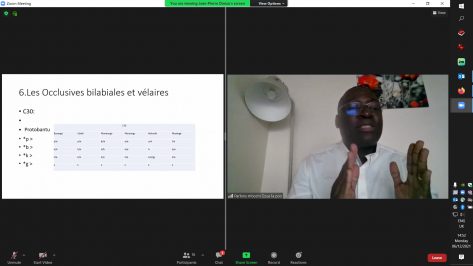
The Bantu languages are the largest African language family, both in terms of number of languages and speakers and geographical distribution. About 350 million or about one in three Africans speak one or more of the 500 or so Bantu languages, which stretch from above the equator to South Africa. Swahili, Lingala, Kongo, Luba, Rwanda, Rundi, Ganda, Zulu, Xhosa, and Shona are just some of the best-known Bantu languages. Proto-Bantu is about 5000 years old and is said to have been born in the border area between Nigeria and Cameroon. This lecture is about the reconstruction of this hypothetical ancestral language, about the exceptionally rapid and large-scale diffusion of its daughter languages and about the history and future of the study area.
https://www.historischetalen.be/cursus/twaalf-smaakmakers/
Contact (in case you want to attend through Zoom):
Sifra Van Acker (sifra.vanacker@ugent.be)
Lorenzo Maselli (lorenzo.maselli@ugent.be)
For the MS-teams link, write to Kim.Groothuis@UGent.be.
In studies on African lexical tone languages, intonation is often approached either as emergent from the cumulative effects of local interactions between sub-tonal features like the register feature (Welmers, 1959; Inkelas & al, 1986; Connell & Ladd, 1990; Clements, 1979) or as limited to domain boundary manifestations (Rialland, 2007). When global effects are mentioned, they are often treated as phonetic in nature (Inkelas & al, 1986; a.o), supposedly because they match the predictions of the Frequency Code, which holds that questions are realized with a higher pitch than statements (Gussenhoven, 2002; Cahill, 2013). Here, we present the results of a case study (production and perception) of yes/no question intonation in Ede Chaabe (cbj, Benin). We found that questions’ register is lower and not higher, but also have a L% edge tone known to characterize ‘lax’ prosody languages (Rialland, 2009); hence contrary to the Frequency Code. Considering these findings, we argue that the observed global effects are represented in the grammar in the form of a Register feature, which is treated in the present account as an intonational feature than spans specific prosodic domains. We go a step further in proposing a new sub-tonal feature model that does not use a register feature (like previous models do), but rather treats lexical tones as pitch change instructions, where Polarity (+/-) indicates the direction of the change and Step (1/2) would indicate its magnitude. In this sense, any given lexical tone (with Polarity and Step features) is projected on the intonational Register plane, post-lexically.